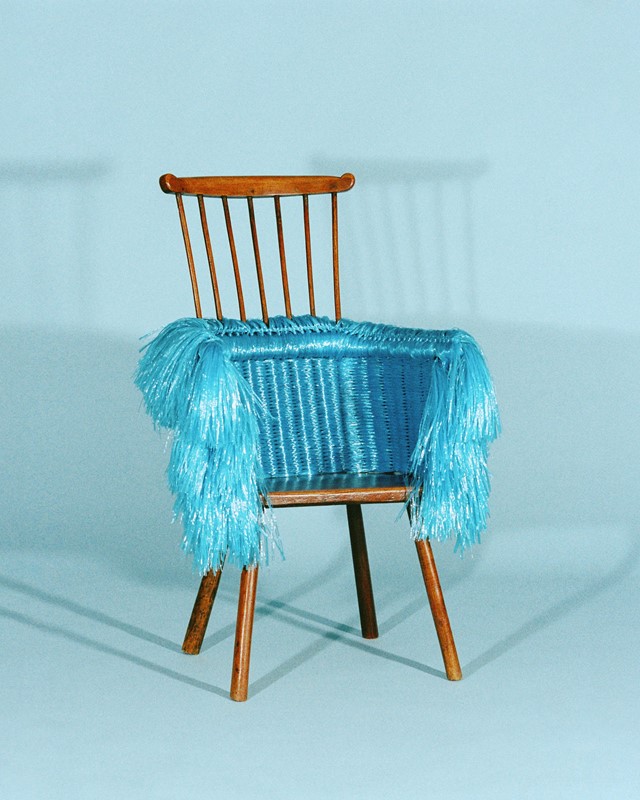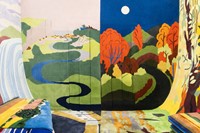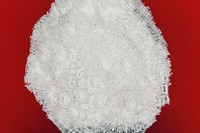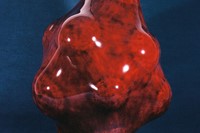As a new exhibition on Loewe opens in Shanghai, Jonathan Anderson talks about injecting the Spanish house with fun and humour, working with artists, and building a “cultural brand”
For creative director Jonathan Anderson, the Loewe Crafted World exhibition – newly opened at the neoclassical Shanghai Exhibition Centre – was a process of self-discovery. Charting both the many facets of craft key to the 1846-founded Spanish leather-makers, and the label’s more recent intertwining with the art world under Anderson’s tenure, the exhibition is epic in its celebration of creativity, the touch of the human hand and above all, joy.
Designed in collaboration with global architecture studio OMA, the show takes over one wing of the enormous landmark building (also known locally as the Sino-Soviet Friendship Building – topped with a gold Soviet star-tipped spike, it commemorates the alliance between China and the Soviet Union). The first room tells the very tactile history of the brand right up to today, where windows from the white cube space reveal the building’s contrastingly ornate neoclassical columns. Here, neat leather travel vanity cases from 1905 and time-worn steel leather-cutting tools are shown alongside meticulous watercolour window designs by José Pérez de Rozas from the 1950s and an example of intricate paper engineering for Anderson’s Spring/Summer 2021 (pandemic) show in a box. Further on, world-famous looks worn by Rihanna and Beyoncé are foregrounded by an enormous and pleasingly squishy pumpkin by artist Anthea Hamilton, a long-time collaborator of Anderson’s. One moves from the archivists’ vitrines to the dimension-bursting world of pop culture and art the label is now embedded in, in just a few metres.
A vast white room, titled Fashion Without Limits, comprises 69 looks from the last ten years since Anderson joined Loewe in 2013. Alongside these were sculptural artworks from the Loewe art collection: William Turnbull’s brutal spearhead-like bronze sculpture Idol 4 (1956), Haegue Yang’s Sesame Street monster mobile The Intermediate – Dangling Hairy Hug (2018), and Zizipho Poswa’s glazed earthenware Mireille Kamwanya, Congo (2022), a sculpture that resembles an oversized vase or vessel but, named after a Congolese hairstylist based in Cape Town, was inspired by the Mangbetu braid crown. The room is a visual paean to Anderson’s extraordinary time at the brand, blending art, tactility and fashion with a seemingly effortless hand.
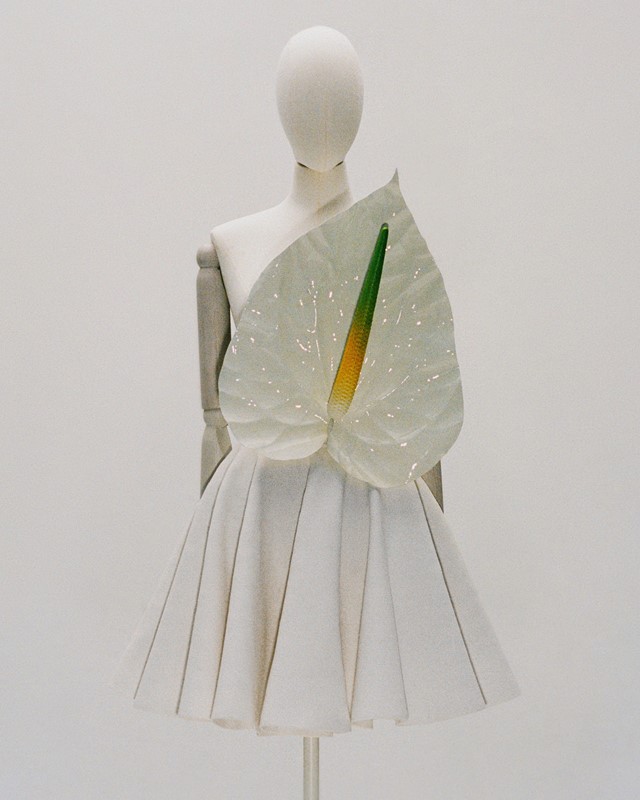
“It was quite amazing to see it all together,” Anderson explains at the opening. “Wow. Ten years of work in this time capsule.” Together, they are a chorus, each element disparate and bold – just think of the pixelated technical knit tee from Spring/Summer 2023, or the sculptural dresses with giant anthurium flowers from the very same collection – each is somehow quintessential of Anderson’s Loewe, chiming in a postmodern harmony.
Anderson spearheaded the interaction between the fashion and art worlds on the runway, rendering it authentic for the first time in a way that now feels commonplace – he started the annual Loewe Craft Prize back in 2016. “In the beginning, it was very difficult trying to get artists to work with a fashion brand,” Anderson explains of this initial approach. “Because I think there was a preconceived idea of fashion as this big bad wolf and artists as this island. [There were] many years of trying to make people feel secure and not overexposed by it. Now, no matter if we’re doing a show venue, a bag collaboration, an invitation, we’ve got an understanding that the artist comes first, ultimately, but that the brand and the artist can harmonise. It’s been hard to get it right because I think in today’s world, it can be opportunistic and can become a bit gross.”
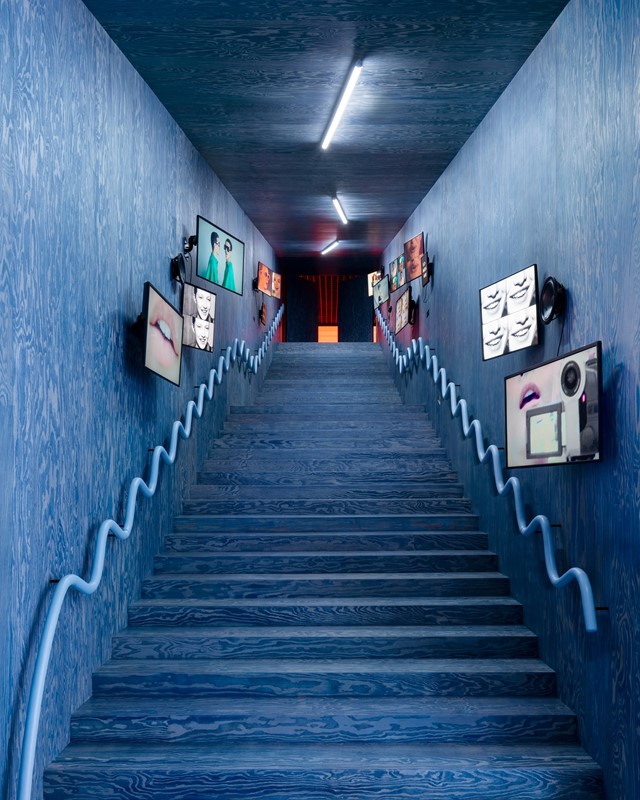
This entwinement was his mission from the beginning, illustrated exquisitely in The Craft Room, a formal, museum-like display of objects – some winners from the Loewe Craft Prize (Eriko Inazaki’s Metanoia, an intricate anemone creature made of tiny coils of porcelain that won in 2023 or Genta Ishizuka’s Surface Tactility 11, a bulbous gobstopper of a resin sculpture, also the 2019 winner), others the outcome of the label’s projects commissioned especially for Milan’s annual design festival, Salone del Mobile (woven baskets and tapestries, or the lurid, raffia and foil woven stick chairs from last year).
“When I joined Loewe I was a young brat,” Anderson laughed. “I was incredibly arrogant. I did an interview in my first week for the International Herald Tribune, and I said, ‘Luxury is dead. I want to build a cultural brand,’ and LVMH were so confused by it, like, ‘What is this? What are you trying to say?’ The whole thing was: how do you put the meaning of the brand back in place? Loewe had this amazing history; it’s had many designers, many transformations. It’s not until the 70s that it went from being a manufacturing brand to a brand. When I joined, it had lost its way in terms of its customer. Who were they selling to? Now, when I look back at the idea of building a cultural brand, I feel like there’s a humble balance between Spain, myself, Loewe, craft, pop culture, art, the foundation. It all hovers in a way where it’s not just about the luxury brand.”
In a series of nine small rooms titled Unexpected Dialogues, this relationship is celebrated in glorious technicolour. From a Ghibli room, with floor-to-ceiling screens playing the Japanese animation studio’s finest features and a huge furry Totoro belly seat in the middle, to an entirely carpeted nook dedicated to master weaver John Allen’s jubilant landscape rugs, visitors can enjoy an utterly joyous ode to artisans. In another room, mohawked mannequins clad in classic William Morris prints stand on a dizzying digital display of swirling leaves and woodland creatures, while in another, a suspended flower garden inspired by the drawings of CE Voysey turns audiences upside down. Each room presents pieces from those collab collections, bringing to life the joy of Anderson’s time at the house. Alongside rooms dedicated to the very technical skills of the house’s legacy of craft – sheaves of coloured leathers, intricate intarsia weaving and the durability tests exacted upon the label’s elegant accessory hardware – was a reminder that, despite its luxury heritage, the label does not take itself too seriously.

Across those rooms was a visual display of the vast diversity in Anderson’s choices – just as he’d expected with the clothes – but each was connected by a sense of levity and rebellion. “In the very beginning, all the [Loewe] stores had arts and crafts furniture in them – a lot of it was William Morris,” Anderson said. “And I really do believe in the philosophies of William Morris – I think that as much as he was a traditionalist, he was a bit of a radical. If you were looking at Mackintosh furniture [anew] today, this person would be radical in their approach. There is something in all the artists – in the craft they do – that becomes quite twisted. If you look at Picasso’s ceramics, they borderline on kitsch … I think some of his greatest works are in ceramic form because it becomes this interesting bridge between make, the decorative, the painterly. I guess it’s an edit of the people I love.”
That levity is not simply down to Anderson’s own proclivities but, in fact, was a core of the label that he set out to exhume. “When I joined Loewe it was very bourgeoise, very tight as brand. It had crippled itself somehow through the idea of being a luxury brand. But when I started looking into the archive – and from my own experience of Spanish culture – I [understood that] there’s so much fun in Spanish culture, there’s a lightness. It’s very different from the French, the German, the Brits. There’s something of an ease in life – there’s huge amounts of humour. That’s what I hope we have in Loewe because that’s what makes it real as a brand.” Bigger than a marketing exercise or an Instagram moment – though they’re there, too – Loewe Crafted World is uplifting; it is a celebration of the pinnacle of humanity: the beauty we can create with our hands.
Loewe Crafted World is on show at the Shanghai Exhibition Centre until 5 May 2024.
